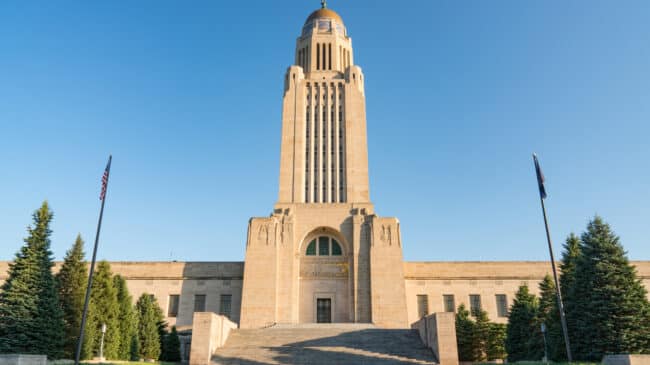A version of this written comment was submitted to the Nebraska Education Committee on February 21, 2025.
Nebraska Legislative Bill (L.B.) 557 would make it easier for students to find public schools that best fit their needs. The legislation would let students attend public schools outside their catchment areas through a random selection process. Moreover, the proposal would prohibit school districts from discriminating against applicants based on their abilities and disabilities. If codified, Nebraska would be the 10th state to adopt both strong cross- and within-district open enrollment laws.
Overall, it’s a strong bill since students could attend any public school with open seats. It also would ensure that applicants aren’t discriminated against based on their abilities or disabilities.
However, L.B. 557 can still be strengthened. The bill should clarify that districts must accept all transfers so long as capacity is available in the appropriate grade level as determined in the proposal’s section 79-238(1).
Moreover, the current proposal strikes language in 79-238(1)(d) of the state’s code that requires districts to publish their capacity, open enrollment policies, and procedures. This makes the open enrollment process less family-friendly since applicants’ families may not know when, where, and how to apply. At the very least, the proposal should require districts to provide this information on their websites.
Lastly, the proposal could improve transparency. In particular, it should be required to publish a report, compiled under state code 79-239(4)(b), on the Nebraska Department of Education’s website annually, showing the number of rejected applicants and why they were denied. Additionally, the department should include the number of transfers by district in the published report. This creates a one-stop shop that puts districts’ open enrollment practices at the fingertips of families, taxpayers, and policymakers.
Strong open enrollment laws ensure that students can attend schools that are the right fit. During the 2023-24 school year, Nebraska school districts received nearly 7,000 transfer applications.
Students in Arizona, Florida, and Texas use these programs to enroll in A or B-rated school districts. Others use it to escape bullying, access Advanced Placement (AP) courses and specialized learning models, have smaller class sizes, or shorten their commutes.
A 2023 report by the Becker-Friedman Institute for Economics at the University of Chicago found that students participating in Los Angeles Unified School District’s (LAUSD) out-of-zone attendance program saw improved achievement and college enrollment, especially when transfer students were compared with nonparticipants. In addition, school quality in LAUSD’s lowest-performing schools improved the most. The authors concluded that these positive effects were due to the competitive pressures put on public schools by open enrollment.
According to national polling released by EdChoice in January 2025, 75% of school parents support open enrollment, with 81% of Democrats and 71% of Republicans in favor of it. This is why open enrollment bills codified in Idaho, Montana, and West Virginia in 2023 enjoyed significant bipartisan support.
Adopting robust open enrollment policies in Nebraska would help ensure that public schools are available to all students and empower families to find public schools that are the right fit.

